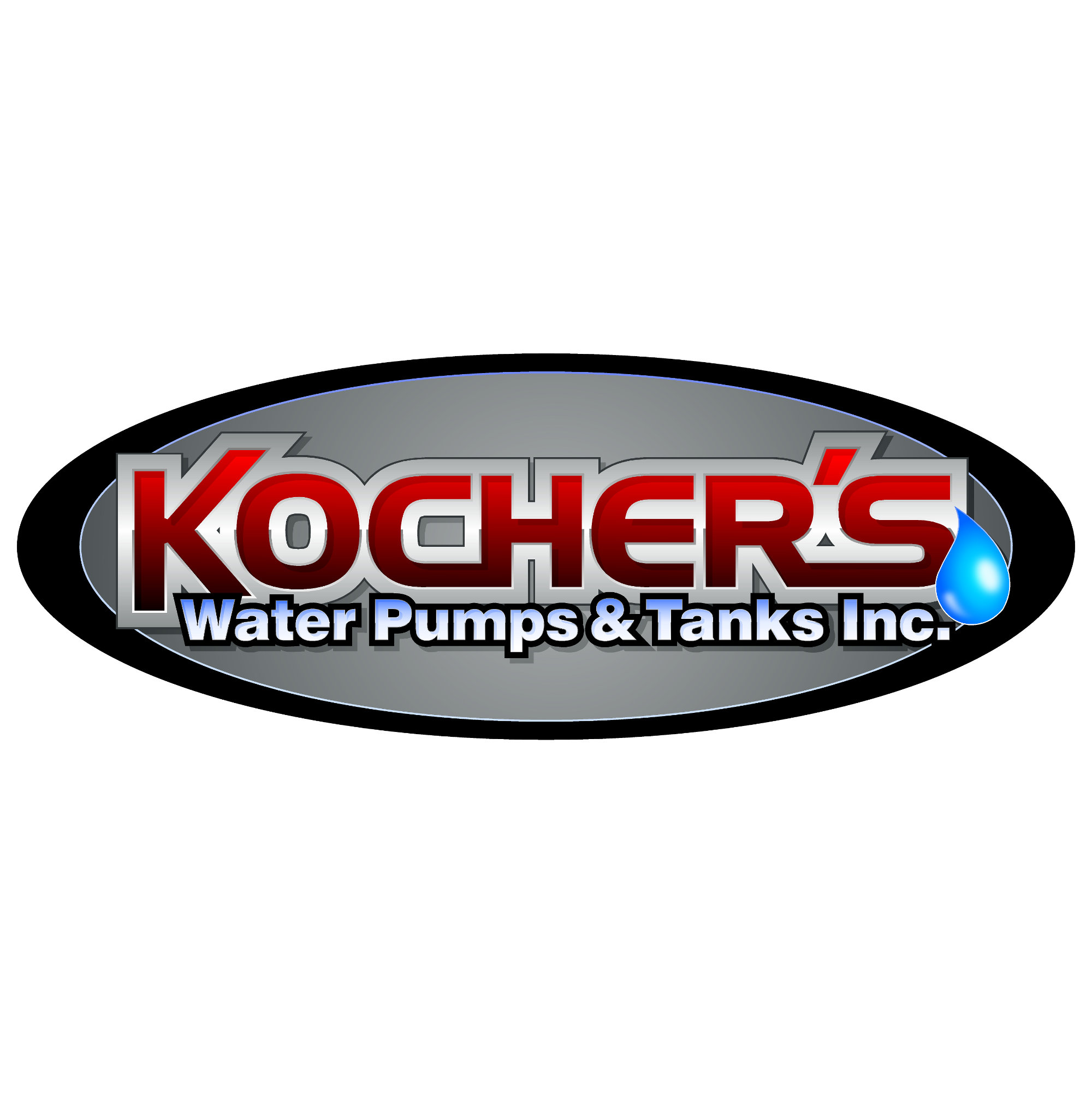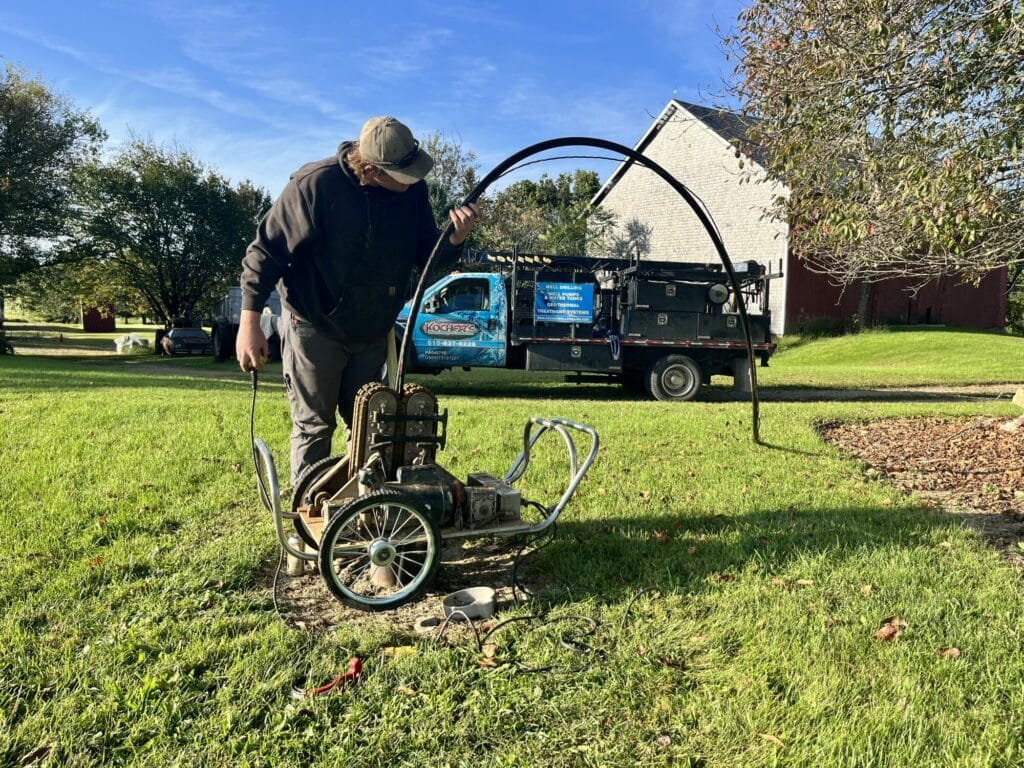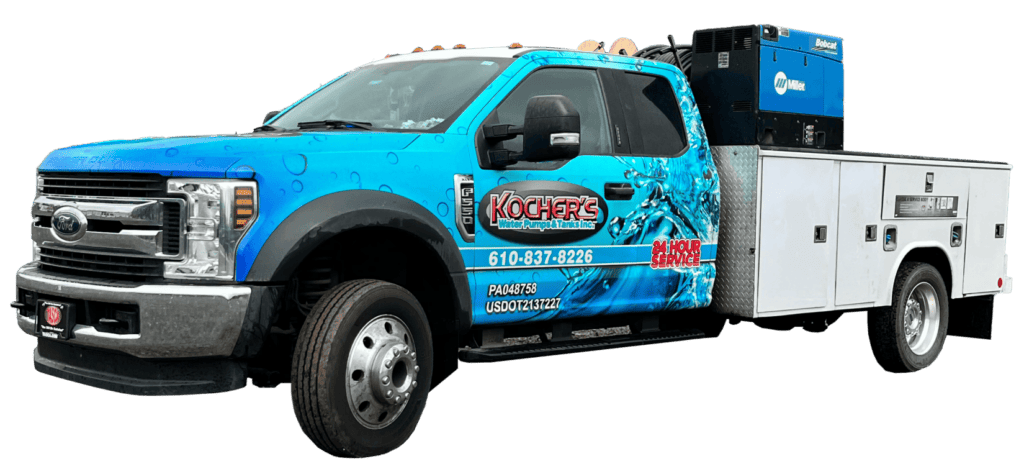Geothermal Loop Configurations
Closed Geothermal Ground Loops
The most typical geothermal installation utilizes a closed loop system. In a closed loop system, a loop of piping is buried underground and filled with water or antifreeze that continuously circulates through the system. There are four major types of closed loop geothermal systems: horizontal loops, vertical loops, slinky coils and pond loops.
Horizontal Geothermal Ground Loops
If adequate soil or clay based land is available, horizontal geothermal ground loops are typically one of the more economical choices. In horizontal geothermal ground loops, several hundred feet of five to six feet deep trenches are dug with a backhoe or chain trencher. Piping is then laid in the trench and backfilled. A typical horizontal ground loop will be 400 to 600 feet long for each ton of heating and cooling. Because of the amount of trenching involved, horizontal ground loops are most commonly used for new construction. Finally, because horizontal geothermal ground loops are relatively shallow, they are often not appropriate for areas with extreme climates such as the north or deep south.
Vertical Geothermal Ground Loops
When extreme climates, limited space or rocky terrain is a concern, vertical geothermal ground loops are often the only viable option. This makes them popular for use on small lots and in retrofits. In vertical geothermal ground loops, a drilling rig is used to drill 150 to 300 foot deep holes in which hairpin shaped loops of pipe are dropped and then grouted. A typical vertical ground loop requires 300 to 600 feet of piping per ton of heating and cooling. Vertical loops are typically more expensive than horizontal loops, but are considerably less complicated than drilling for water. Less piping is also required for vertical geothermal ground loops as opposed to horizontal loops as the earth’s temperature is more stable at depth.
Slinky Coil Geothermal Ground Loops
Slinky coil geothermal ground loops are gaining popularity, particularly in residential geothermal system installations. Slinky coil ground loops are essentially a more economic and space efficient version of a horizontal ground loop. Rather than using straight pipe, slinky coils, as you might expect, use overlapped loops of piping laid out horizontally along the bottom of a wide trench. Depending on soil, climate and your heat pumps’ run fraction, slinky coil trenches can be anywhere from one third to two thirds shorter than traditional horizontal loop trenches.
Geothermal Pond Loops
If at least a ½ acre by 8 ft deep pond or lake is available on your property, a closed loop geothermal system can be installed by laying coils of pipe in the bottom of a body of water. However, a horizontal trench will still be needed to bring the loop up to the home and close the loop. Due to the inherent advantages of water to water heat transfer, this type of geothermal system is both highly economical and efficient.
Open Geothermal Ground Loops
With open geothermal ground loops, rather than continuously running the same supply of water or antifreeze through the system, fresh water from a well or pond is pumped into and back out of the geothermal unit. Both an abundant source of clean water and an adequate runoff area are required for a successful open loop system. While double well designs can be economical, use of open geothermal ground loops is generally discouraged and even prohibited in some jurisdictions. Water quality is key to an open loop design as mineral content and acidity can quickly damage geothermal units. Also, improper installation or runoff management of an open loop geothermal system can result in ground water contamination or depleted aquifers.




